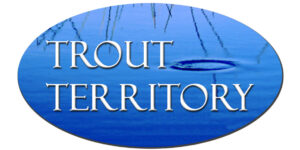How to catch a trout
How to catch a trout Trout behaviour, trout food, fly selection Find the food and you will find the trout. Is the wind pushing food along shorelines and out to points, or into corners and against the shore? Are the birds collecting insects in the air or off the water? Is it calm and warm, or windy and cool? In what combinations are these things happening? These observations will usually give you a hint about where the feeding trout are! For instance, in a still water situation, trout generally feed in the direction that the wind is coming from. [...]
Lakes – casting, stream craft, & fly fishing
Lakes - casting, stream craft, & fly fishing Fishing from the shoreline of a lake, we need to read the conditions. Lake level, wind direction, weed growth, insect activity, evidence of fish present, tails, rises, etc. Some shore lines have vegetation and sometimes you are actually on the shoreline and kneeling down... shrubs, long grass, rocks, etc. need to be considered. If you venture out into the water the same obstructions may apply as well as the unseen, i.e. potholes, submerged logs. Cover the fish you see according to what you observe. If you don't see anything you would go [...]
Rivers – casting, stream craft, and fly fishing
Rivers - casting, stream craft, and fly fishing Fly fishing rivers starts off on opening day at the beginning of August in the lowlands around Cressy. In mild conditions there is always a chance of a fish on the dry, especially in the smaller streams. Other well known waters around Cressy, such as Brumbys Creek, fishing will be collecting snail and depending on water levels, there can be some good tailing and mooching activity. In years when we have floods the Macquarie River has many backwaters and ditches where the trout can be found patrolling, collecting worms and grubs. A [...]
Four Springs Lake Tasmania
Four Springs Lake A trophy trout fishery Four Springs is a low altitude lake in the northern midlands of Tasmania. It is a purpose built fishery, with a lot of shallow areas a well as deep water. It has excellent weed growth and over the decade as it has evolved, the diversity in insect life has become rather dramatic. We enjoy fishing Four Springs early and late season. Spring is a magic time of year on Four Springs. On the best days, which I would have to say are overcast, warm, and drizzly, the hatches can be phenomenal and when [...]
Cradle Mountain area Tasmania
Cradle Mountain area In the Cradle Mountain area, good fly fishing options include lake Lea, the Vale River, and Talbots Lagoon. Lake Lea Lake Lea is a very short distance from Cradle Mountain Lodge, very near to the Vale River in the Vale de Belvoir. Lightly tannin waters, great to wade and polaroid. It's rather shallow, with consistent gradients. Vale River The Vale rises out of the ground flowing south away from Lake Lea, not into it. This is Karst country, water being pushed up through limestone, and like the chalk streams of England, is crystal clear. There are [...]
Brumbys Creek Tasmania
Brumbys Creek Tasmania A lowland river, from day one a trout fisher can expect to find a display of feeding fish in some of the shallow areas... tails and swirls! When the light is good, at any stage of the season, because the water is mostly crystal clear, the sight fishing is top class. Situated five minutes from our door, Brumbys Creek is supplied with clean, cool water from Great Lake in the Central Highlands via the Poatina Power Station. There is a wide variety of fishing to be found along its course with some beautiful freestone sections and [...]
Great Lake Tasmania
Great Lake Tasmania Only 30 minutes from Cressy, Great Lake is a deep and clear vast inland sea on the north rim of the Great Western Tiers in the Central Highlands of Tasmania. It houses an excellent populations of wild brown and rainbow trout Super windlane fishing, froth lines and food slicks bring about sometimes intense surface feeding frenzies and great dry fly fishing opportunities. At other times, subtle rise forms appear in calm slicks as chironomid emerge during cool, overcast conditions. Find the food and you'll find the fish. Rainbows feature well in these conditions and Great Lake [...]
Lake Burbury Tasmania
Lake Burbury Tasmania Lake Burbury is on the west coast of Tasmania, approaching Strahan, closest town is Queenstown. Burbury is open all year round, has both browns and rainbows, and a large bag limit. The most productive time of year to fish Burbury is the spring, summer, autumn months. It is a deep water fishery that really requires a boat to enable good access. All angling methods are allowed at Burbury. Burbury trout feast on midge, beetles, and mudeyes windlanes are a major feature for the fly fisher. Cool, calm [...]
Tungsten Beaded Nymph – wet fly
Tungsten Beaded Nymph - wet fly Nice small, quick sinking nymph that would probably be amongst its variants a most reliable upstream nymphing pattern and can be suspended below a buoyant dry fly, Royal Wulff or grasshopper etc. Hook: size 16 Body: pheasant tail Tail: pheasant tail Thorax: pheasant tail mixed with a little colour of antron Back to Trout Flies
Guitar String Nymph – wet fly
Guitar String Nymph - wet fly This wet fly is basically a fairly large bead headed nymph using the brass bead from a discarded guitar string (or course, a regular bead works fine too!). I like to experiment with things I have around. I first used this nymph in clear fast water upstream nymphing and found that it did quite well consistently taking fish. Its nature is to ride through the gravel and bounce around amongst the stones, so it really does get right into the slower zone, close to the stream bed. It fits in quite well with some [...]

